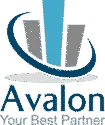ORACLE ADF FEATURES
- Productive Application Development
- Visual and Declarative Experience
- Declarative Business Services
- Rich Web User Interfaces
- Advanced Controller
- Simplified Binding
ORACLE ADF BENEFITS
- Visual and Declarative Java EE Development
- Business Services Development
- User Interface Development
- Binding Business Services Components to the User Interface
BENEFITS OF ORACLE ADF OVER OTHER FRAMEWORKS
- End-to-End Solution
- Development Environment
- Platform Independence
- Technology Choice
- Technology Commitment
- Metadata-Driven
- Declarative Customization
- Enhanced Reusability
- Source availability
- Support
ORACLE ADF CAPABILITIES
- Integrated and Pluggable Model-View-Controller Framework
Oracle ADF is based on the model view controller design pattern that promotes loose coupling and easier application development and maintenance. Oracle ADF provides a solution for each of the MVC layers and supports easy integration of the various layers together with integrated security and customization solution. - Rich Web Based Interfaces
Oracle ADF includes a library of more than 150 standards-based Java Server Faces (JSF) components with built-in HTML5 and Ajax functionality. With these components, web deployed user interfaces can be developed with a level of functionality and interactivity previously reserved for thick-client applications. The components offer data interaction, data visualization, and encapsulated browser side operations in a set of easy to use components that makes rich client application development easier than ever. The ADF Faces components adapt to support user interfaces on both regular browsers and tablet based browser including support for touch gestures and adaptive layouts. - Advanced Page Flow
Oracle ADF extends the basic JSF controller to provide the ADF Controller. The ADF Controller provides: enhanced page and operations flow control, comprehensive state management, and reusability of flows as components in other flows and inside JSF pages and portals. - Drag and Drop Data Binding
ADF provides a data-binding framework that simplifies binding UI to business services through a simple drag and drop operations in the IDE. This is done while still keeping the independence of the business service from consuming interfaces. With the framework, the UI developer is insulated from the underlying implementation of the business service layer. This makes the process of building the UI truly decoupled from the implementation of the business service layer, better positioning the application for implementation in a service-oriented architecture. - ADF Business Components
ADF Business Components simplifies the task of business service development and style. These powerful components are visually designed and customized to allow declarative access to relational databases. The business components can implement custom business functionality, declarative validation, security, and advanced object-relational functionality ADF Business Components is just one of the possible business service implementations within the ADF ADF Business Components is just one of the possible business service implementations within the ADF meta framwork. Developers can also use EJB/JPA, Web Services (REST or ORACLE DATA SHEET2 SOAP), POJOs and other implementations for the service layer. - Multi-channel Clients
ADF applications can be developed with an eye towards a variety of delivery methods. The framework supports direct implementation of web-based interfaces, mobile delivery, and desktop applications, including integration with Microsoft Excel. Due to the loose coupling architecture that Oracle ADF supports, developers can leverage the same business services with multiple user interfaces thereby increasing the reusability of their code.
Open Source Option – Oracle ADF Essentials
Oracle ADF Mobile extends Oracle ADF to support development of on device mobile applications. Leveraging HTML5 and Java, Oracle ADF Mobile enables developers to build and extend enterprise applications for iOS and Android from a single code base. Using a hybrid mobile architecture, ADF Mobile supports access to native device services, enables offline applications, can integrate server generated content, and protects enterprise investments from future technology shifts.
- Extensive IDEs Support
Oracle JDeveloper offers a comprehensive visual and declarative experience for Oracle ADF applications development. This means that wherever possible the developer has the capability to design an application utilizing visual editors and diagrams and then customize that design through integrated dialogs and property inspectors.JDeveloper also provides the ability for the developer to choose to directly manipulate source code at any time. This provides the option to switch between development styles at will to suit the type of application or preferences of the developer. Oracle JDeveloper contains a unique debugger that enables developers to set break points on the declarative aspects of Oracle ADF.For development shops standardized on the Eclipse platform, Oracle ADF development is supported through the Oracle Enterprise Pack for Eclipse tooling. This includes support for development with Oracle ADF Faces, Oracle ADF Controller and the Oracle ADF Binding layer. Oracle Enterprise Pack for Eclipse also offers support for ADF specific debugging and analysis of code dependencies.
CONCLUSION
Oracle’s Application Development Framework offers an unparalleled level of productivity for application developers looking to build enterprise applications based on industry standards. Leveraging a sound architecture, open standards, and a plethora of built-in features Oracle ADF accelerates the development of cutting edge enterprise applications.
